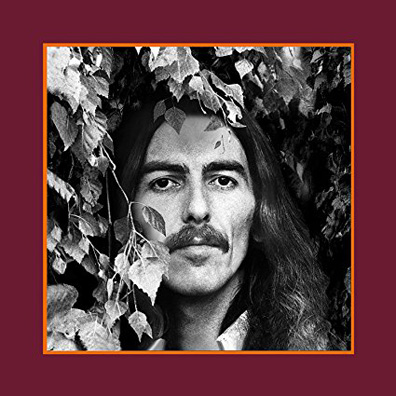
George Harrison
The Vinyl Collection
Capitol
Oct 30, 2017
George Harrison
![]()
George Harrison would have turned 74 this year. He died in 2001 and his untimely death at such a relatively young age still haunts his fans, whose admiration for Harrison extends far beyond his role as one of the four Beatles, or even as a solo musical artist. Harrison’s spirituality, gentle wisdom, and dry sense of humor also contributed greatly to his appeal and to the affection he enjoyed with his fans and fellow musicians.
The Vinyl Collection is a mammoth release and easily one of the most lavish and indeed expensive reissues of any Beatles group or solo works. It’s great to have all these albums together in one place and released on vinyl, as that is the way nearly all of them were originally released.
This collection is housed in a beautiful box and each package is replicated exactly like the original album release, with the records themselves pressed on 180-gram heavyweight vinyl. While most of these albums were originally released in the pre-digital age, Gone Troppo (1982) and Cloud Nine (1987) were released at the time on vinyl and CD. The double-disc set Live in Japan (1992) release has been issued and reissued in various configurations and formats.
Harrison’s first two albums are curious works and are often not mentioned or even known by the more casual Beatles or Harrison fan. His debut Wonderwall Music, the first solo album by a Beatle, was the soundtrack to the 1968 Joe Massot film Wonderwall. The film was a trippy, psychedelic, nearly impenetrable, science fiction-inspired mind excursion starring Jane Birkin. While it was very much a cinematic curio of the time, the soundtrack offered up healthy doses of Indian music that went beyond the touches of sitar and tabla on Beatles albums.
Electronic Sound shows Harrison again experimenting with new instruments. It marked being one of the first musicians to release a full album of synthesizer music experiments as well as one of the few releases on The Beatles’ Zapple label, a spoken word and experimental subsidiary of Apple.
Finally free of The Beatles and with a storehouse of unrecorded songs, Harrison released the triple-disc All Things Must Pass in 1971. It is arguably the best solo album released by any of The Beatles and stands as easily one of the best albums of the 1970s. Any analysis here can in no way even scratch the surface in reflecting the musical, lyrical, and production heights the album reached. It isn’t so much an album as a monument to an artist at the height of his power, a cornerstone of a watershed moment in album rock music history, and most importantly, a piece of music that sounds as fresh today as it did upon its release and whose lyrical messages are timeless in their resonance.
From that point throughout the ‘70s Harrison continued to make fine, well-received albums that spawned hits. Such albums include as Living in the Material World and to a lesser degree Dark Horse, Extra Texture, 33 1/3, and George Harrison.
His first album in the ‘80s, Somewhere in England, contained “All Those Years Ago,” his tribute to the late John Lennon. It was one of his best songs in years. His next album Gone Troppo was perhaps his weakest solo album and Harrison dropped out of the music business before roaring back with Cloud Nine, an album that reignited his career. It was also at this time that Harrison launched The Traveling Wilburys with Bob Dylan, Jeff Lynne, Tom Petty, and Roy Orbison. Cloud Nine would be Harrison’s last studio album until his final solo album, the grossly underrated Brainwashed, posthumously released in 2002.
The package also includes two picture discs. The first disc is of the track “When We Was Fab” and the second is of “Got My Mind Set on You.” These are nice enough extras, but hardcore fans and Harrison scholars probably would have come up with something of more scarcity and value.
The only live music here, as mentioned before, is Live in Japan, also featuring Eric Clapton.
Which brings us to the question that many may ask: Why is The Concert for Bangladesh not included? The easy answer is that the album was not a George Harrison solo album. It will only be a matter of time before the three-disc set is reissued on vinyl.
Regardless of the aforementioned quibbles, this is truly a magnificent project that is worthy of Harrison’s musical stature. (www.georgeharrison.com)
Author rating: 8/10
Current Issue

Issue #72
Apr 19, 2024 Issue #72 - The ‘90s Issue with The Cardigans and Thurston Moore

Comments
Submit your comment
There are no comments for this entry yet.